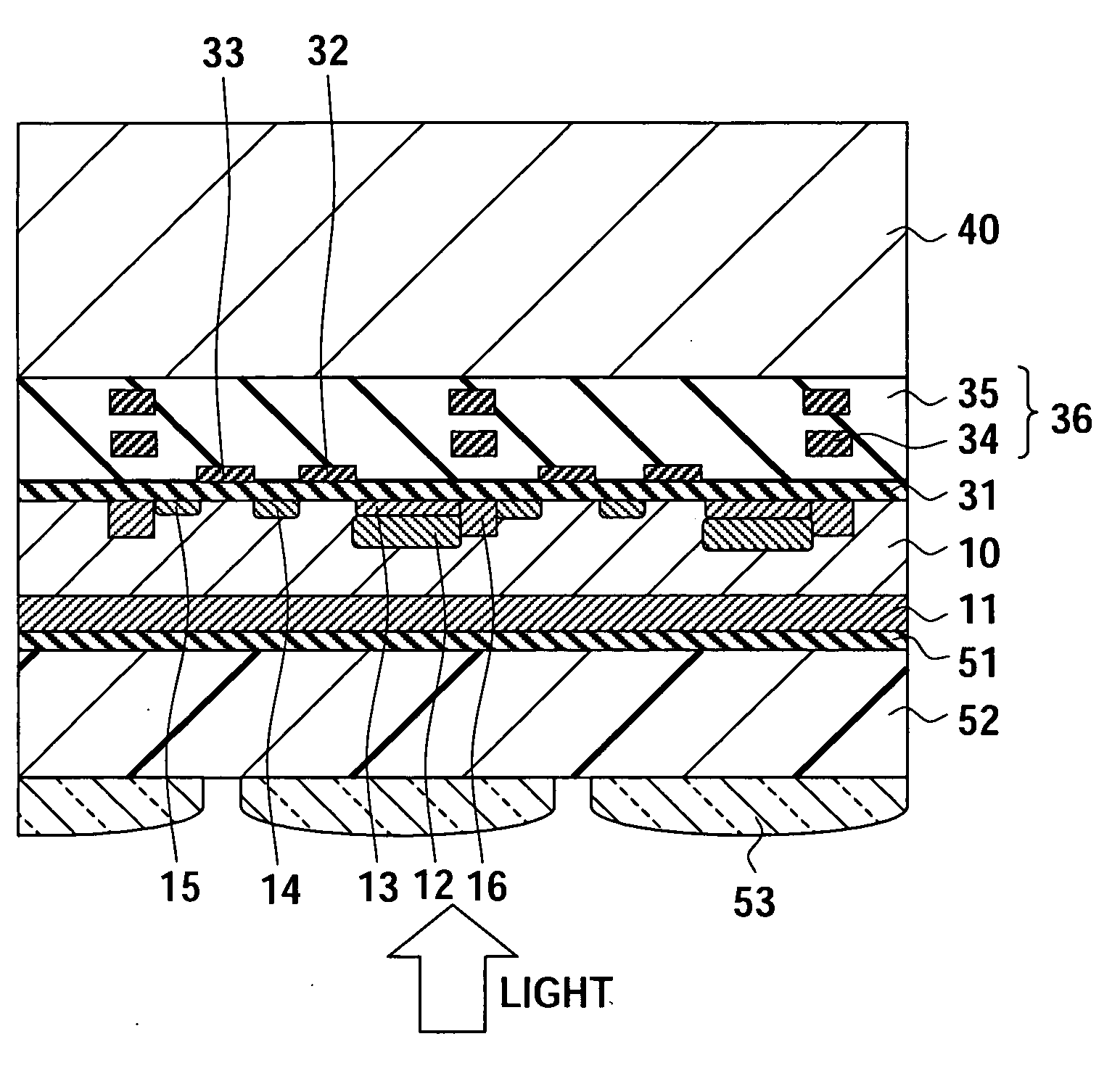Solid-state imaging device, camera and method of producing the solid-state imaging device
a solid-state imaging and camera technology, applied in the direction of color television, television system, radio control device, etc., can solve the problem that metal invading the silicon layer may not be able to be performed with the gettering, and achieve the effect of suppressing crystal defects, improving sensitivity, and suppressing dark curren
- Summary
- Abstract
- Description
- Claims
- Application Information
AI Technical Summary
Benefits of technology
Problems solved by technology
Method used
Image
Examples
Embodiment Construction
[0022] Preferred embodiments of the present invention will be described with reference to the drawings. The present embodiment will be described with examples using an electron as a signal charge, a p-type as a first conductive type, and an n-type as a second conductive type. Note that, if using a hole as the signal charge, the above polarities may be reversed.
[0023]FIG. 1 is a cross-sectional view of a solid-state imaging device according to the present embodiment. In the present embodiment, a MOS type solid-state imaging device referred to a CMOS image sensor will be described.
[0024] In the present embodiment, a p-type epitaxial layer 10 of silicon is used as a substrate. The thickness of the p-type epitaxial layer 10 depends on a kind and application of the solid-state imaging device, and is preferably 4 to 6 m for visible light or 6 to 10 μm for near-infrared radiation. Further, a p-type impurity concentration (a first impurity concentration) of the p-type epitaxial layer 10 a...
PUM
 Login to View More
Login to View More Abstract
Description
Claims
Application Information
 Login to View More
Login to View More - R&D
- Intellectual Property
- Life Sciences
- Materials
- Tech Scout
- Unparalleled Data Quality
- Higher Quality Content
- 60% Fewer Hallucinations
Browse by: Latest US Patents, China's latest patents, Technical Efficacy Thesaurus, Application Domain, Technology Topic, Popular Technical Reports.
© 2025 PatSnap. All rights reserved.Legal|Privacy policy|Modern Slavery Act Transparency Statement|Sitemap|About US| Contact US: help@patsnap.com



